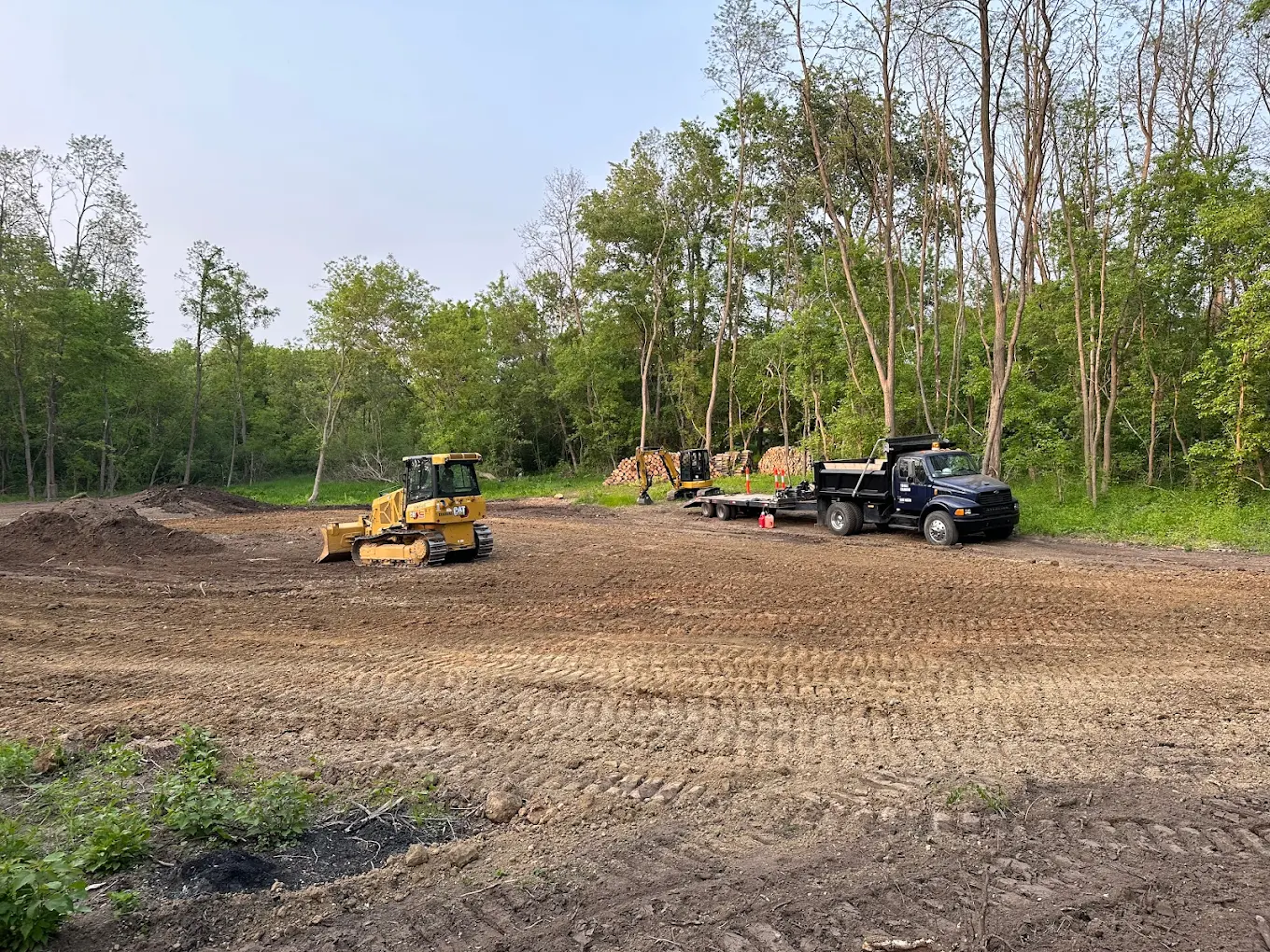Grading for Climate Resilience: Designing Sites to Handle Heavier Rains
If you’ve been around Southeast Michigan long enough, you’ve noticed the storms feel sharper: heavier downpours, faster runoff, and more water trying to find the wrong place to go. Good grading used to be “keep the water off the foundation.” Now it’s about designing a site that can survive and recover from bigger storms without costing you weeks of repairs or a surprise order from the township.
At Thomas Excavation, we treat grading as climate-smart site design. That sounds fancy, but practically it means three things: move water intentionally, slow it down where you can, and protect what matters—foundations, driveways, drain fields, and landscape investments. Land balancing and precise mass grading aren’t just construction steps; they’re risk management. moves that reduce erosion, prevent sediment from leaving the site, and preserve usability after heavy rains.
Why it matters now: when gutter-to-street runoff suddenly doubles, poor grading turns clean water into an eroding force. A shallow ditch can become a channel that chews out road shoulders; a low spot becomes a long-term pond. We plan so those things don’t happen. Our approach starts with a site assessment of how water arrives, where it concentrates, and what’s downhill; then we design grading and drainage that direct flows to stable, designed outlets rather than into foundations or storm drains.
A few practical design ideas we put into every climate-aware plan: swales and graded flow lines that move clean water around disturbed zones; stabilized outlet protection (riprap or armoring) so the exit point doesn’t scour away your driveway shoulder; and check dams or rock filters in concentrated flows to slow velocity and drop sediment before it leaves the site. Those aren’t band-aids; they’re engineered controls that last and reduce downstream headaches (and notices) from regulators.
We also bring tools to make those ideas stick. GPS-guided equipment and laser grading let us hit grades the first time, not after three reworks. That accuracy matters for positive drainage, uniform slopes, and getting sump and inlet grades right so runoff moves predictably. And because EGLE and county SESC officers expect documentation, we install controls and log inspections so your project has a clear record if anyone asks.
A climate-resilient grading plan also thinks seasonally. Temporary stabilization seed and mulch, temporary blankets, or straw wattles buy time between phases so a single rain doesn’t undo weeks of work. We stage entrances and install geotextile-stone drives so trucks don’t track mud onto the road. Those small decisions keep the project moving and reduce erosion-control headaches when the weather turns.
Finally, this work pays back. Proper grading avoids emergency repairs, protects newly planted landscaping, and reduces the risk of costly regrades or foundation problems later. For developers and homeowners alike, it’s an investment that keeps insurance claims, warranty headaches, and permit enforcement off the table.
If you’re planning new construction, a large landscape change, or just worried about the next heavy storm, let’s walk the site together. We’ll show you where water is likely to go, what we’d change, and how a climate-aware grading plan can protect the property and keep your schedule on track.
Contact Thomas Excavation for a site assessment and a grading plan that’s built for the weather we actually get now and next season.

